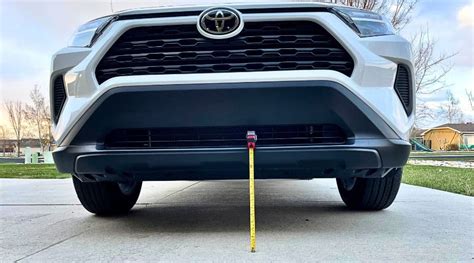When we take cars out for drives, we not only anticipate good, well-defined roads; we look out for damaged roads as well, which makes us worry about the undercarriage of our cars. You have to tackle speed breakers that don’t have a uniform height, unmarked speed bumps, stones of varying sizes lying in the middle of the road, and even the odd roadkill. This is why road clearance is relevant in vehicles, and why you should pay attention to it as a driver.
What is ground clearance?
Car ground clearance is the vertical distance between the ground and the lowest point of a car’s undercarriage, which is often the lowest section of the chassis or frame. It is a crucial measurement that establishes the distance between the road surface and the vehicle’s engines, transmissions, exhaust system, and other mechanical components.

Ground clearance is crucial for vehicles on uneven terrain, as it allows them to navigate over obstacles without damaging the undercarriage. Higher clearances improve stability on smooth roads, while lower clearances may be more susceptible to underbody scraping on speed bumps or steep driveways. Manufacturers typically specify ground clearance in millimetres or inches, so it’s essential to consider this factor when choosing a car based on your driving conditions and preferences.
Off-roading enthusiasts prefer SUVs or crossovers with high ground clearance (7.5-9 inches) for smooth handling on uneven surfaces, while those who prefer a lower ride height (5-7 inches) prefer vehicles with a better “feel” of the road, such as sports cars or sedans. So, how do you know what height ground clearance is right for you?
Why does ground clearance matter?
Off-road capability: A vehicle’s off-road capability is mostly dependent on its ground clearance. The car can avoid getting trapped or damaging the undercarriage by navigating obstacles like rocks, tree stumps, and uneven terrain because of its higher ground clearance.
Road obstacles: Ground clearance is crucial when running into road hazards, including potholes, speed bumps, and debris. When driving over these obstacles, a car with limited ground clearance may get scratched or damaged.

Carrying heavy loads: Towing trailers or transporting large loads can benefit from increased ground clearance. When the suspension is under additional strain, it aids in keeping a safe distance between the ground and the car’s underside.
Safety: Adequate ground clearance contributes to a vehicle’s overall stability and handling. It can help prevent problems such as bottoming out, where the underside of the vehicle touches the road and control is compromised.
Customisation: Ground clearance is a question of taste and fashion for some car owners. Some drivers may modify their vehicles to look higher or choose a higher ride height for aesthetic reasons.
In general, knowing a car’s ground clearance enables drivers to make choices that suit their needs, tastes, and way of life. Knowing ground clearance is crucial for a safe and pleasurable driving experience, whether one is engaging in off-road excursions, urban commuting, or navigating difficult road conditions.
Some of the vehicles known for having the highest ground clearance include:

SUVs and off-road vehicles: SUVs and off-road vehicles are generally designed with higher ground clearance to cope with rough terrain and off-road adventures. Examples of high-clearance SUVs include the Toyota Land Cruiser, Jeep Wrangler, Land Rover Defender, and Mercedes-Benz G-Class.
Pickups: Many pickups are designed with higher ground clearance to improve their off-road capabilities and handle heavy loads. Vehicles such as the Ford Ranger and Nissan Navara are known for their high ground clearance.




